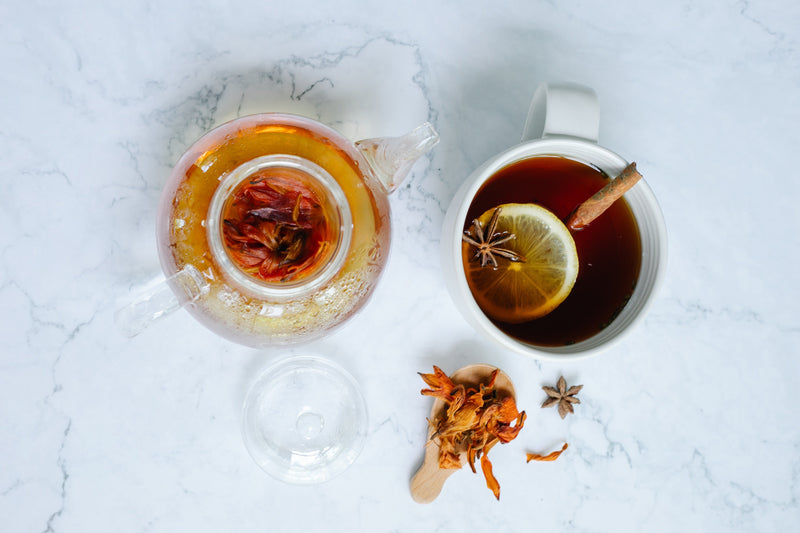As the crisp air settles in and days grow shorter, our bodies and minds naturally adjust to the rhythm of winter. In Ayurveda, the ancient Indian science of health, this season corresponds to the rise of Vata dosha, the energy of air and space. Vata governs movement, lightness, and dryness, and when imbalanced, can manifest as anxiety, stiffness, and dry skin – common winter woes!
But fear not, Ayurveda offers a simple yet powerful tool to combat Vata's excesses and embrace the cozy season: Abhyanga, the practice of self-massage with warm oil.
Abhyanga: More than just a massage
Abhyanga transcends the feel-good experience of a regular massage. It's a holistic ritual that nourishes your body, mind, and spirit on multiple levels:
Physical:
The warm oil penetrates deep into tissues, lubricating joints, improving circulation, and boosting lymphatic drainage. This helps combat Vata-related dryness, stiffness, and aches.
Mental:
The gentle massage movements soothe the nervous system, reducing stress and anxiety, and promoting deep relaxation. Abhyanga can be a meditative practice, fostering self-awareness and inner peace.
Emotional:
The act of self-care and nurturing through Abhyanga cultivates self-love and appreciation for your body, a vital aspect of overall well-being.
Why Abhyanga shines in winter
Winter, with its cold, dry, and windy nature, perfectly amplifies Vata's qualities. This can lead to dryness, cracking skin, joint pain, restlessness, and even depression. Abhyanga's warming, grounding, and nourishing properties are the perfect antidote to these Vata imbalances:
Warmth:
Massaging with warm oil brings a gentle internal warmth, counteracting the external chill and promoting a sense of coziness.
Grounding:
The rhythmic strokes and self-touch anchor you in the present moment, combating Vata's tendency towards scatteredness and anxiety.
Nourishment:
Ayurvedic oils like sesame, almond, or coconut are rich in vitamins and fatty acids that deeply nourish and moisturize the skin, combating Vata-induced dryness.
Making Abhyanga your winter ritual
Incorporating Abhyanga into your winter routine is simple and transformative. Here's how to get started:
- Choose your oil: Select an oil based on your dosha or simply opt for this Vata-pacifying oil or plain sesame or almond oil. Warm the oil gently without overheating.
- Prepare your space: Create a warm, relaxing environment with calming music and soft lighting.
- Start with your head: Gently massage your scalp in circular motions, then move to your ears and face. Avoid putting oil directly in your eyes. Use gentle strokes on your stomach and chest, and slightly firmer strokes on your arms and legs. Try to massage some oil on to your back as well, if possible.
- Pay attention to your breath: Breathe deeply and slowly throughout the massage, synchronizing your breath with your strokes.
- End with your feet: End by massaging your feet in circular motions on top and bottom. Take care to not slip after applying oil on feet.
- Relax and shower: Let the oil sit on your skin for 15-30 minutes or one Muhurta, which is 48 minutes. Then shower with warm water. Use a gentle, natural cleanser like Ubtan powder if desired.
Embrace the winter glow with Abhyanga
Regular Abhyanga practice during winter can be your gateway to a season of warmth, inner peace, and radiant health. So, light some candles, warm your oil, and indulge in this self-loving ritual. As Vata finds its balance, you'll discover a winter filled with glowing skin, a calm mind, and a spirit ready to bloom even in the coldest months.
Bonus Winter Healthcare tips:
- For an extra Vata-pacifying effect, add a few drops of essential oils like lavender, sandalwood, or clary sage to your massage oil.
- If you're short on time, focus on massaging your feet and lower legs before bed.
Remember, Abhyanga is a practice of self-love and connection. Listen to your body, adjust the pressure and strokes as needed, and simply enjoy the experience of nurturing yourself from the inside out.
Let this winter be a season of Abhyanga-infused wellness, radiating warmth and peace from within!
*Editor’s Note: This post is not medically qualified. This post is written by an Ayurvedic Wellness Practitioner. The information in this article is intended for your educational use only and is not a substitute for professional medical advice, diagnosis, or treatment. Always seek the advice of your physician or other qualified health providers with any questions you may have regarding a medical condition and before undertaking any diet, supplement, fitness, or other health programs.
























